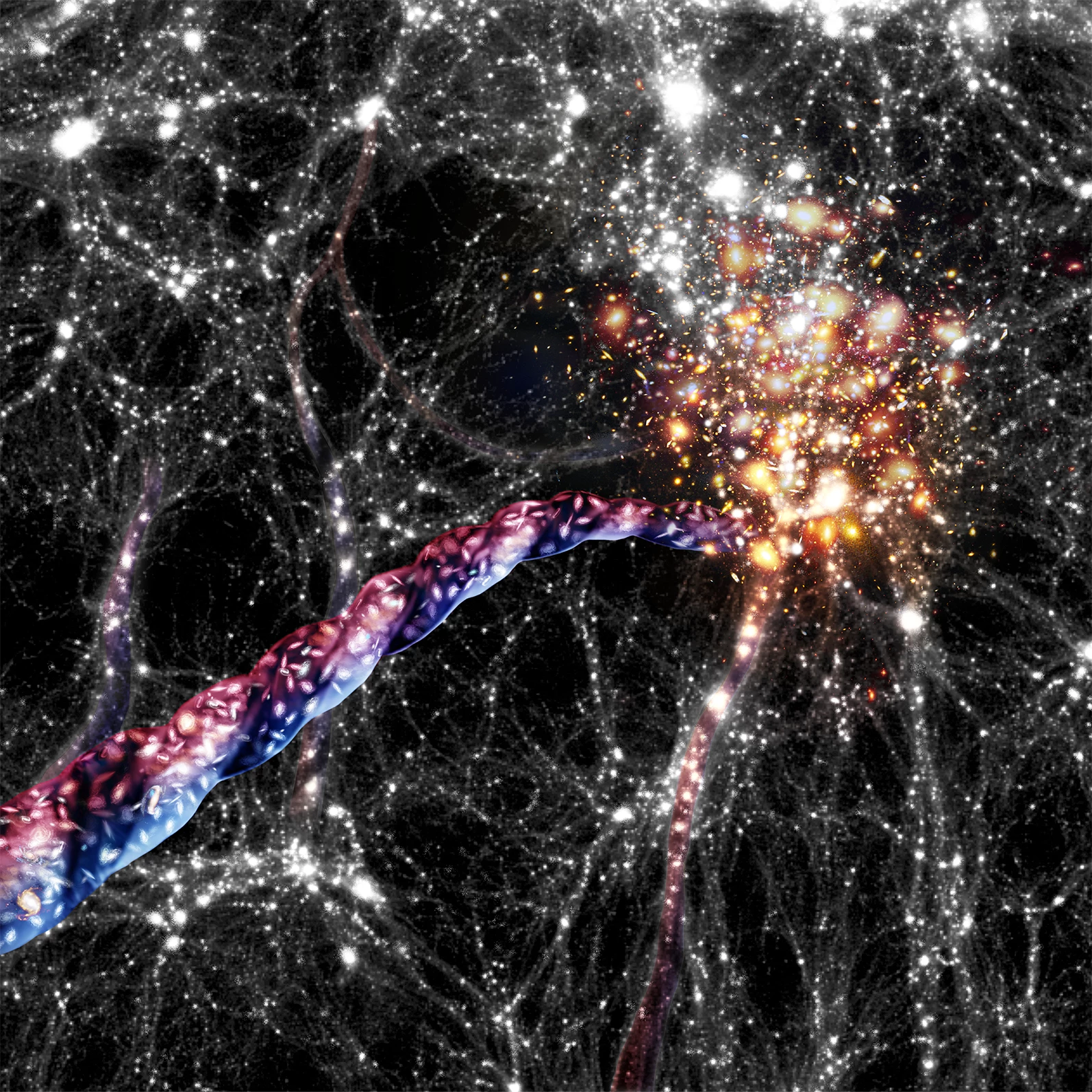Planets rotate, stars rotate, galaxies and galaxy clusters all rotate. But how far up the chain does this angular momentum go? Astronomers have now discovered evidence that some of the largest scale structures of the universe also rotate – mind-bogglingly gigantic filaments that pipe galaxies around the cosmos.
From our vantage point here on Earth, looking up at the stars, they seem to be pretty much randomly scattered across the sky. But on the largest scales the universe is surprisingly well-ordered. Stars are generally concentrated in galaxies, and galaxies themselves tend to gather in clusters.
But it doesn’t end there. If you zoom out far enough, the universe would look like a “cosmic web,” made up of barely-conceivable filaments of galaxies and dark matter, stretching across hundreds of millions of light-years to connect galaxy clusters.
It was previously theorized that these filaments rotate – after all, the smaller structures that make them up are known to rotate – but finding evidence for the idea is understandably tricky. So for the new study, astronomers at the Leibniz Institute for Astrophysics Potsdam (AIP) set out to observe the phenomenon.
The team used the Sloan Digital Sky survey to map the motion of hundreds of thousands of galaxies. They were divided into likely filaments, approximated by cylinders, then those cylinders were split in half horizontally. The aim was to check for motion of galaxies at the tops and bottoms of those cylinders that would signify that the filament was turning.
And sure enough, there was. The light from galaxies on the tops of the filaments was red-shifted, indicating they were moving away from us, while the galaxies below were blue-shifted, moving towards us. Together that paints a clear picture that the filament as a whole is spinning, making it the largest known structure to have this kind of motion.
“On these scales the galaxies within them are themselves just specs of dust,” says Noam Libeskind, corresponding author of the study. “They move on helixes or corkscrew-like orbits, circling around the middle of the filament while traveling along it. Such a spin has never been seen before on such enormous scales, and the implication is that there must be an as yet unknown physical mechanism responsible for torqueing these objects.”
The discovery raises some pretty major implications about the large-scale structure of the universe. Besides not knowing how that motion could begin on such a huge scale, the team wants to investigate what effect the spinning might have on the galaxies within them.
The research was published in the journal Nature Astronomy.
Source: AIP




